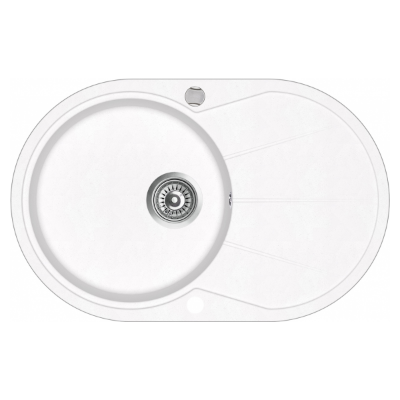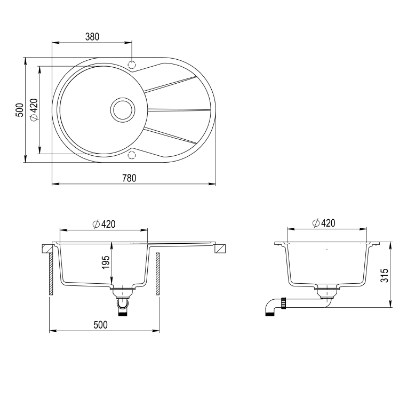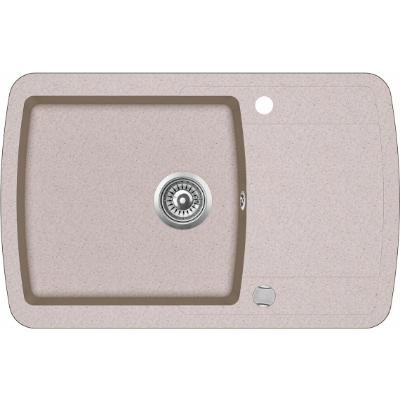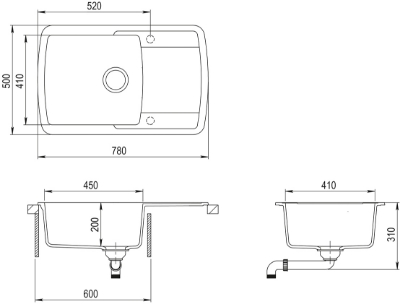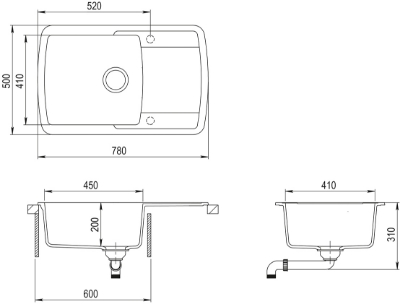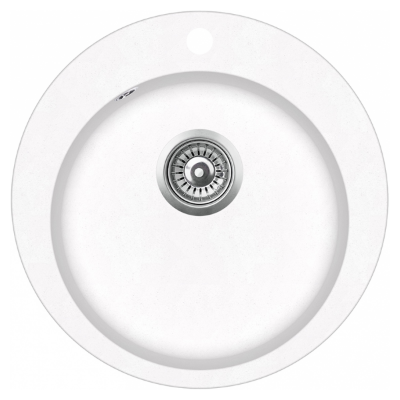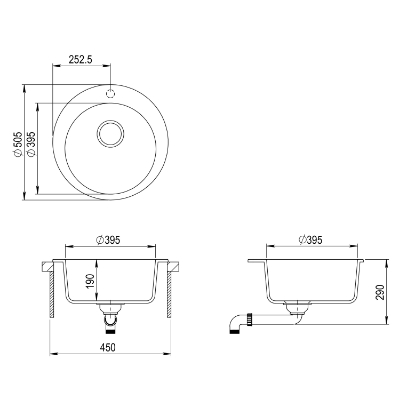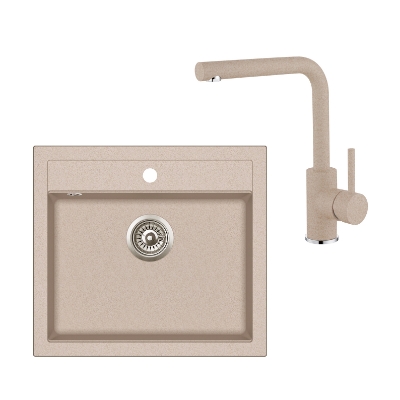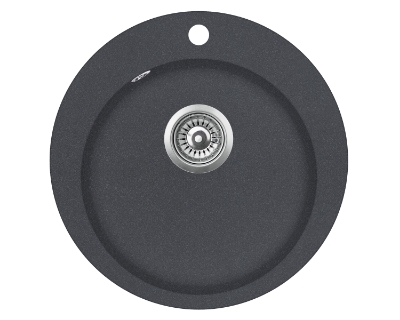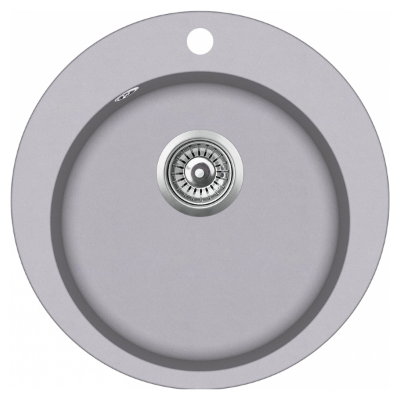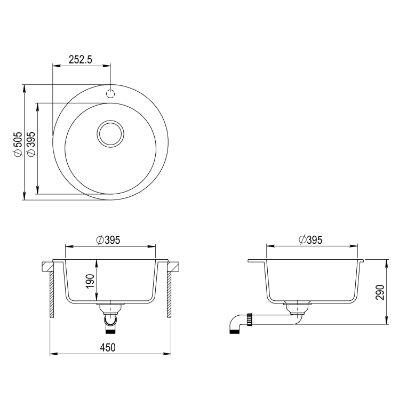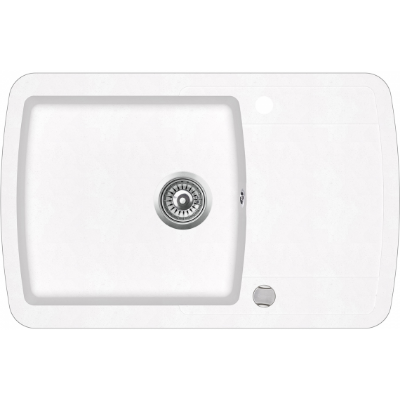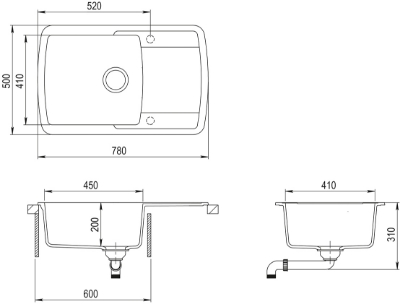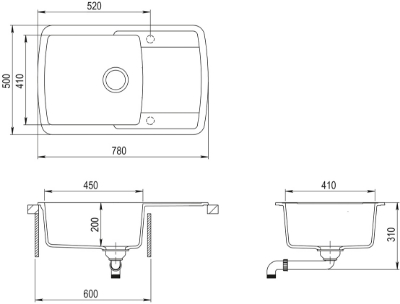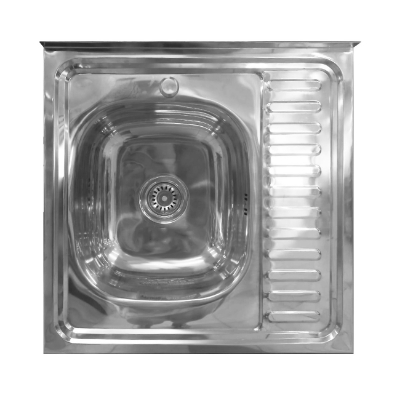Kitchen sinks
Kitchen Sinks: How to Choose, Install, and Maintain
The kitchen sink is one of the most essential elements in any kitchen. It provides a convenient space for washing dishes and impacts the kitchen's functionality and design. Making the right choice of sink, ensuring proper installation, and maintaining it well can significantly extend its lifespan and enhance the overall user experience.
Types of Sinks and Their Advantages
Metal Sinks
A popular choice due to their durability, ease of maintenance, and modern appearance. They are resistant to moisture, temperature fluctuations, and stains. However, water spots and scratches may appear on the surface over time.
Artificial Stone Sinks
An exclusive and durable option. Made from composite materials that combine the properties of natural stone and resin, they are resistant to scratches and high temperatures.
Enamel Sink with Brackets (without siphon)
A classic choice that fits perfectly into retro or industrial-style kitchens. The enamel surface is easy to clean and durable, although it may be more sensitive to impacts and chips.
Sink Installation: What to Consider?
Installation Types
- Top-Mount Sinks – Installed on the edge of the countertop, they are easier to install and suitable for most kitchen cabinets.
- Undermount Sinks – installed beneath the countertop, providing a sleek and modern look. They require precise cuts in the countertop.
- Flush-Mount Sinks – Fixed below the countertop, these sinks offer an elegant appearance and make countertop maintenance easier. However, they require special mounting hardware for installation.
Tips for Proper Installation
- Ensure that the kitchen cabinet is sturdy enough to support the selected sink, as stone composite sinks are heavier than steel models.
- Before installation, check the placement of water supply and drainage pipes to avoid unnecessary remodeling.
- Properly secure the sink’s brackets or fasteners to ensure stability and prevent leaks.
- When installing the siphon, make sure all connections are tightly secured to prevent leaks.
Sink Care and Maintenance
- Steel Sinks – Dry the sink after use to prevent water spots. Clean with a soft cloth and specialized cleaning products for stainless steel.
- Stone Composite Sinks – Use mild cleaning agents and avoid abrasive sponges that could damage the surface.
- Enamel Sinks – Avoid heavy impacts that can cause chips. To preserve the enamel’s shine, use neutral cleaning agents.
Conclusion
With the right choice, professional installation, and regular maintenance, your kitchen sink will serve you well for many years and simplify your kitchen tasks!
- Popular Products
- Name: A to Z
- Name: Z to A
- Price: Low to High
- Price: High to Low
 Out of stock
Out of stockStainless steel sink VENTO 50X44X55 satin topmount
 Out of stock
Out of stock














